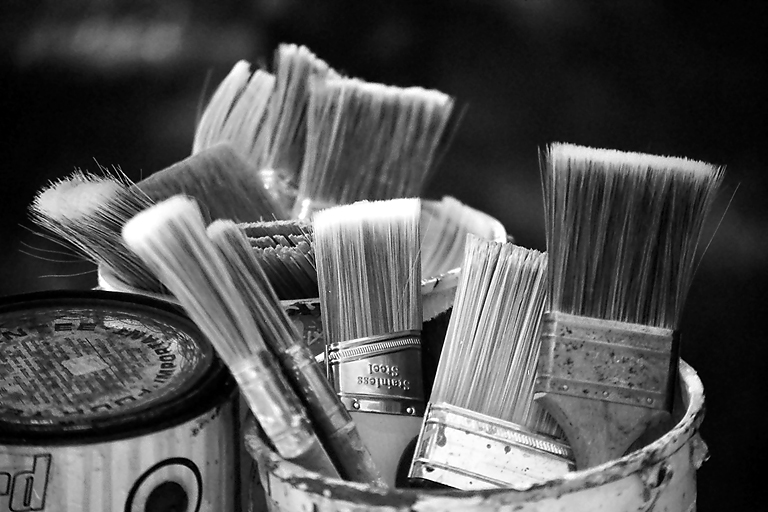Painting Prep 101
 From choosing the best paints to use, to choosing an appropriate finish, to being aware of VOCs in paint, we’ve made it our mission to educate you on paint and making your home not only a stunning one but a healthy one too. You can’t utilize all of this knowledge without the proper equipment and preparation. When painting you’ll need to apply paint and coatings with high-quality application equipment. Better-quality brushes, rollers, and applicators tend to apply a thicker, more uniform, longer-lasting coat of paint than paint applied with cheap equipment. Top-quality equipment also speeds up and simplifies your work. The tools you require will depend on the type of project you are doing and the type of paint you are applying. Still, some simple guidelines hold true for any quality paint job.
From choosing the best paints to use, to choosing an appropriate finish, to being aware of VOCs in paint, we’ve made it our mission to educate you on paint and making your home not only a stunning one but a healthy one too. You can’t utilize all of this knowledge without the proper equipment and preparation. When painting you’ll need to apply paint and coatings with high-quality application equipment. Better-quality brushes, rollers, and applicators tend to apply a thicker, more uniform, longer-lasting coat of paint than paint applied with cheap equipment. Top-quality equipment also speeds up and simplifies your work. The tools you require will depend on the type of project you are doing and the type of paint you are applying. Still, some simple guidelines hold true for any quality paint job.
When choosing your brush you should be mindful that here are two general categories of paintbrush: those made of natural-hair bristles and those made with synthetic materials, such as nylon or polyester. If you are working with alkyd or oil-based paints and coatings, use natural bristle brushes or synthetic bristle brushes. When properly cleaned and stored, they will continue to apply paint smoothly and uniformly for years to come.
Regardless of whether you’ll be doing interior or exterior painting, make sure that you match the size and shape of your brushes by the job. Large brushes cover large surfaces and small brushes to cover small areas. Match the right brush to the job to get the best paint application possible.
For large exterior surfaces a flat brush with a wider diameter of 25mm to 3mm are best. To cut in at the corners of exterior and interior walls, use a wide 50mm brush with tapered edges. More precise painting for exterior and interior window frames and trim, requires an angled sash brush.
When selecting a high-quality brush, pay attention to the bristles. They should have split ends, to create a finer, more even finish, have a definite flex at their tips, to enable them to spring back into shape, be shorter on the outside and longer in the center, to provide more control over where the paint is applied;
Many overlook this last step, but ultimately comfort plays a big part in the power of your brush. Make sure the brush feels comfortable in your hand. If a brush is well made and well cared for, it will last for years, so make sure you can use it comfortably.






